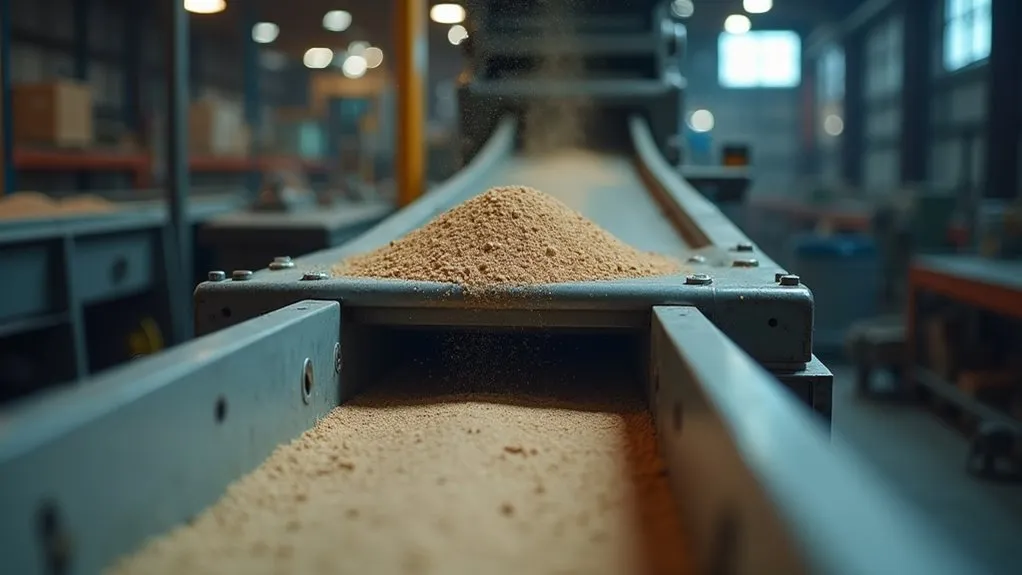A belt weigh feeder accurately measures and controls the flow of bulk materials by integrating a conveyor with load cells and speed sensors. This system converts material weight into electrical signals, calculating the flow rate, which is adjusted via a controller for consistent feeding. Essential in industries like mining and food processing, its accuracy is maintained through regular calibration and maintenance. Exploring its components and applications continues to reveal its critical role in enhancing process efficiency.
Key Takeaways
- Belt weigh feeders measure the flow rate of bulk solid materials on a conveyor, ensuring precise material delivery.
- They integrate load cells to convert material weight into electrical signals and speed sensors to measure conveyor velocity.
- The control system calculates the actual flow rate from weight and speed data, adjusting conveyor speed for consistent feeding.
- Key components include load cells, weighbridge, speed sensor, controller/inverter, and junction box, each performing specific functions.
- Accurate calibration and regular maintenance are critical to ensuring the reliability and long-term performance of belt weigh feeders.
Understanding Belt Weigh Feeders
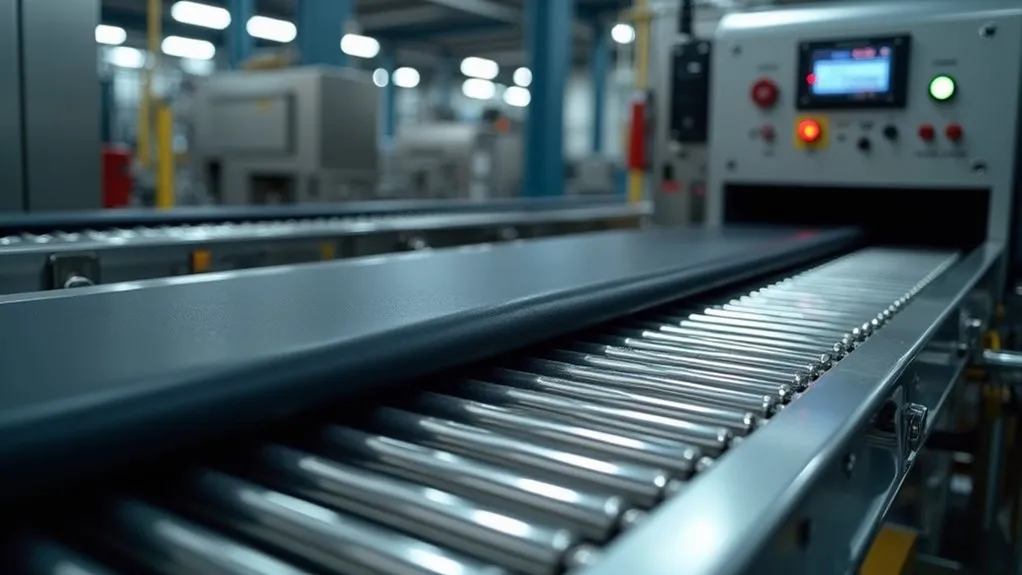
Belt weigh feeders are indispensable components in processing industries, ensuring accurate and consistent material delivery.
Originating from the need for precise material handling, the history of weigh feeders traces back to the evolution of bulk material processing. These devices have become essential in various sectors, including mining, cement production, and power generation, where accurate measurement and control of material flow rates are critical.
By continuously weighing and adjusting the flow of bulk solid materials on a conveyor, belt weigh feeders maintain a constant feed rate, thereby enhancing process efficiency and product quality. Common design features include a conveyor belt supported by idlers and load cells, which are crucial for continuous weighing.
Belt weigh feeders ensure consistent material flow, enhancing process efficiency and product quality by continuously weighing and adjusting bulk solid materials on the conveyor.
Their development and refinement over time reflect the industry’s growing demand for reliability and accuracy in material handling operations.
Operating Mechanism of Belt Weigh Feeders
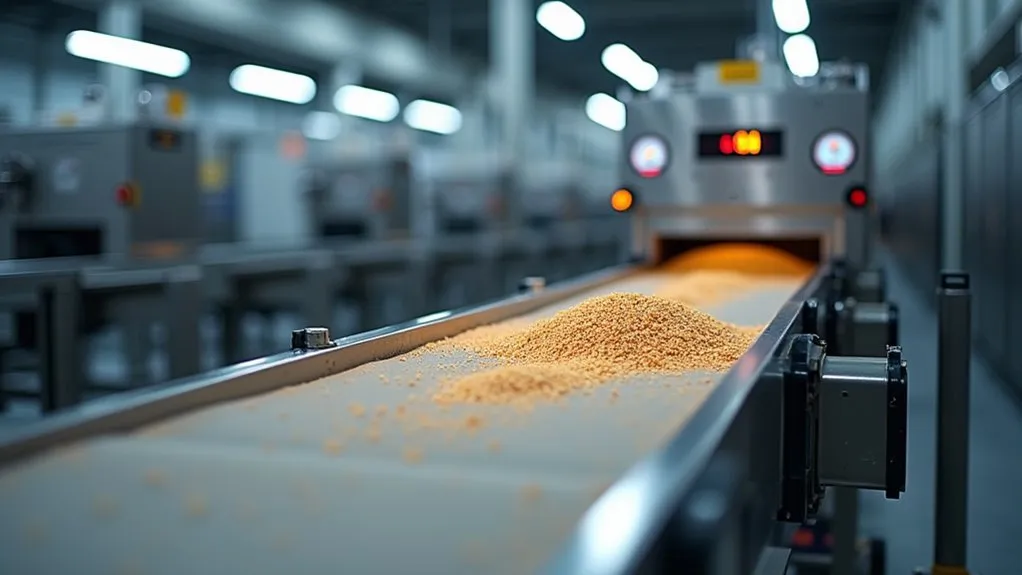
To understand how belt weigh feeders contribute to process efficiency, it’s essential to explore their operating mechanism.
These devices operate on the principle of gravimetric feeding, continuously measuring the material mass on the conveyor to determine the flow rate. Load calibration is critical for maintaining accuracy.
The weighbridge converts material weight into an electrical signal, while the speed sensor measures the conveyor’s velocity.
The controller integrates these inputs to calculate the actual flow rate. Precise load calibration and accurate speed control, often achieved through closed-loop systems and inverters, ensure operational efficiency by adjusting the conveyor speed to maintain the desired constant feed rate.
Key Components of a Belt Weigh Feeder
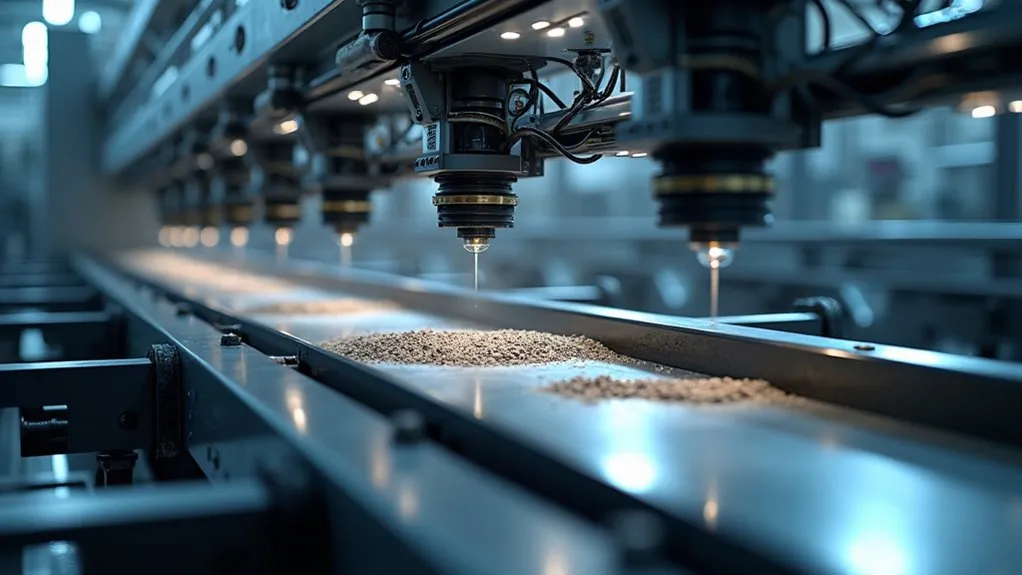
The accuracy and efficiency of belt weigh feeders in bulk material handling processes depend on the harmonious operation of several key components. The integration of various load cell types and weighbridge designs is critical for accurate weight measurement and material flow control.
| Component | Function | Features |
|---|---|---|
| Load Cells | Convert weight to electrical signal | Types: shear beam, tension, compression |
| Weighbridge | Supports belt section over load cells | Fully floating assembly, isolated |
| Speed Sensor | Measures conveyor speed | High-precision rotary encoder |
| Integrator/Controller | Processes signals, controls feed rate | Microprocessor-based |
| Junction Box | Protects electrical connections | Shielded enclosure |
These components work in unison to ensure the belt weigh feeder operates with high accuracy and reliability, providing precise control over material flow rates in various industrial applications.
Applications Across Industries
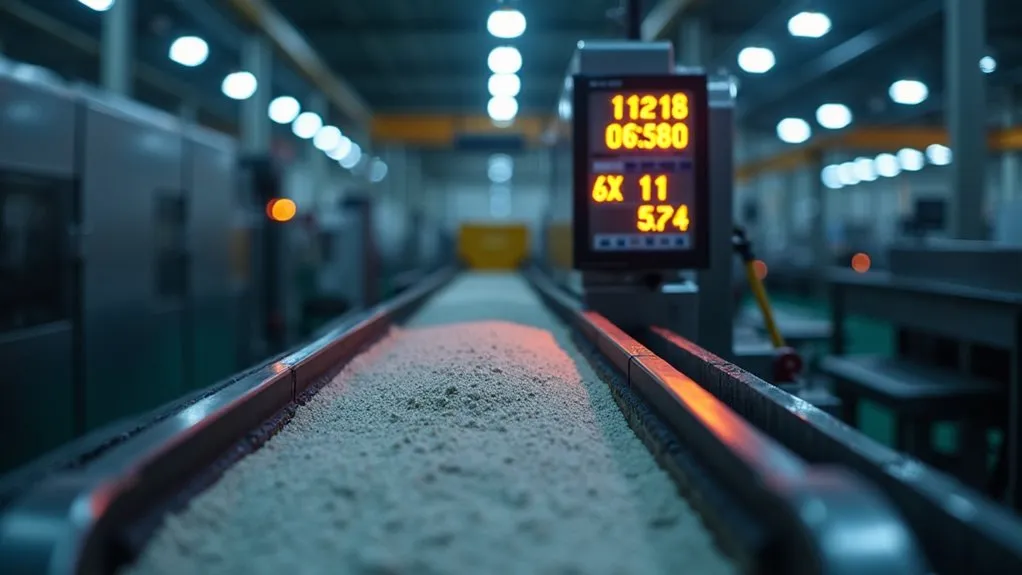
In numerous industries, belt weigh feeders play a critical role in managing bulk material handling processes with high accuracy and efficiency.
In the cement and construction materials sector, these devices ensure precise blending of raw materials, control kiln feed rates, and manage additive and fuel additions.
Similarly, in mining and mineral processing, belt weigh feeders optimize ore processing, blending, and load-out operations.
The food processing industry benefits from their ability to handle sensitive materials and maintain hygiene standards, while in the chemical and plastics industries, they are vital for dosing raw materials and blending components.
Ensuring Accuracy and Best Maintenance Practices

Maintaining the accuracy of belt weigh feeders is critical for industries requiring precise material ratios, such as cement production.
Calibration techniques are essential to address performance drift, including zero and span adjustments using material tests, weights, or chains.
Maintenance protocols involve regular inspections of system stability, conveyor integrity, belt tension, alignment, and speed sensor mechanisms.
These practices ensure long-term accuracy of the feeder, accounting for variables such as material characteristics and environmental conditions.
Documenting calibration results helps track performance and identify trends or issues, ensuring the reliability of belt weigh feeders in critical industrial applications.

 Tiếng Việt
Tiếng Việt 日本語
日本語 中文 (中国)
中文 (中国) 한국어
한국어
